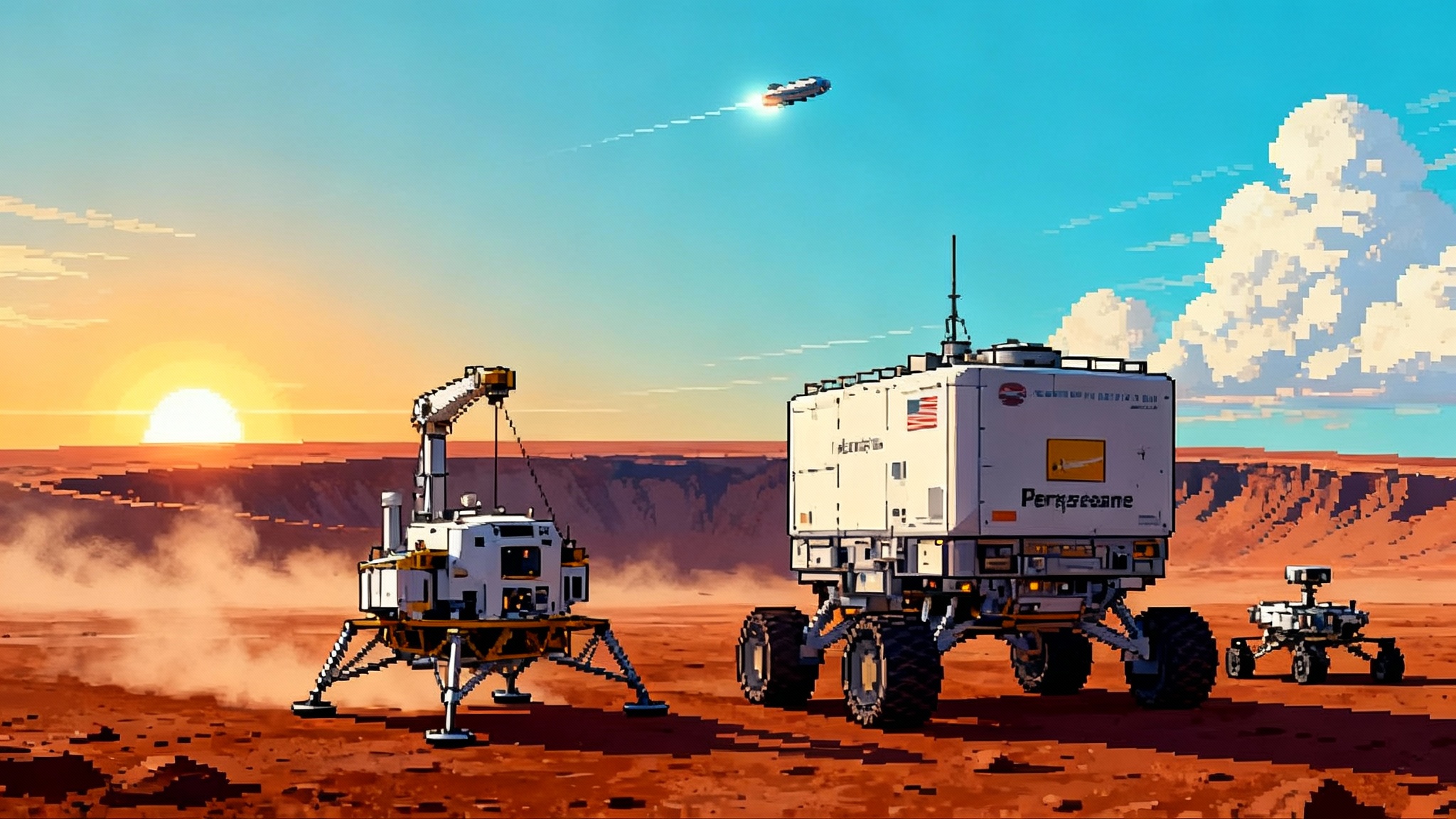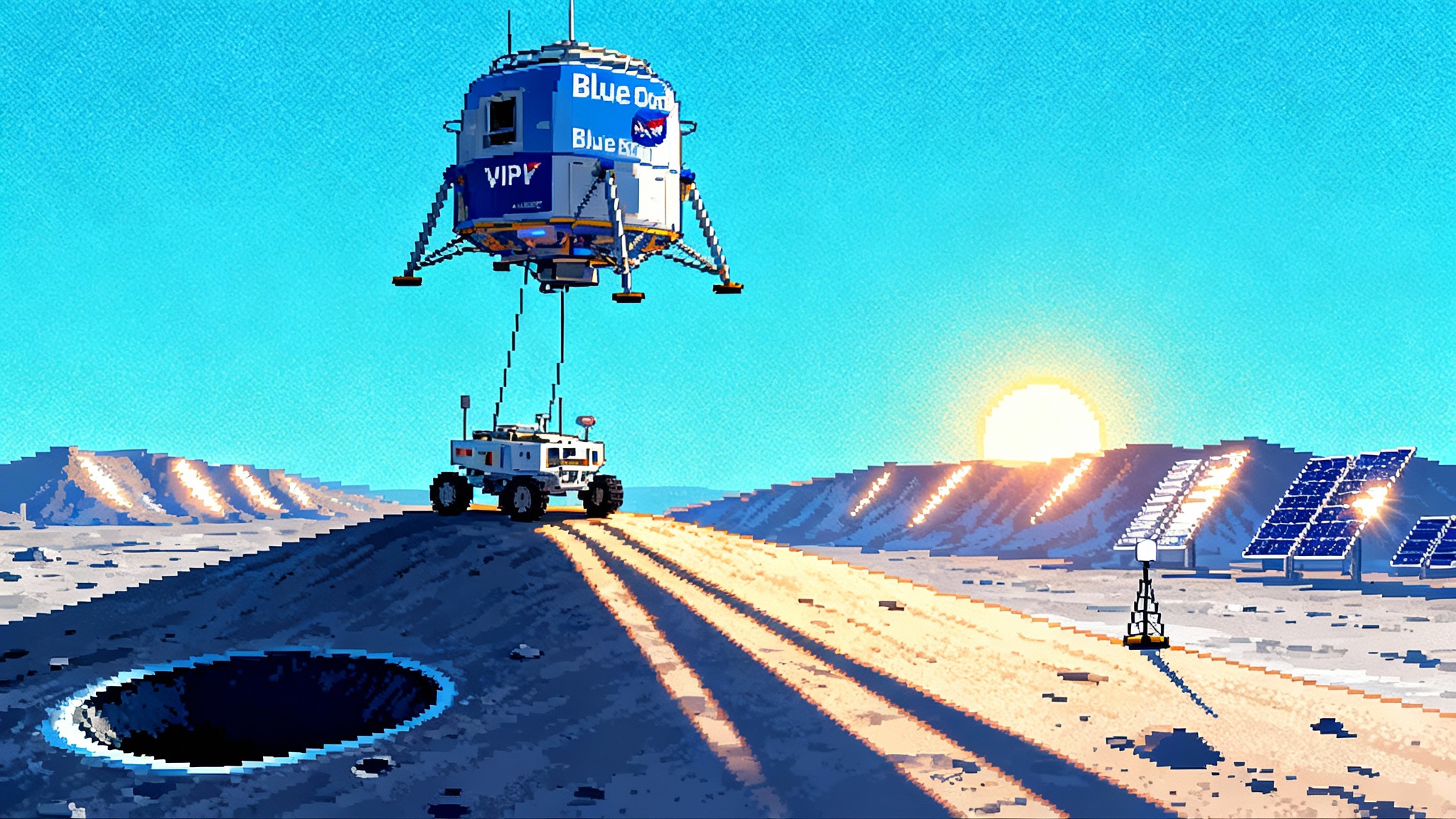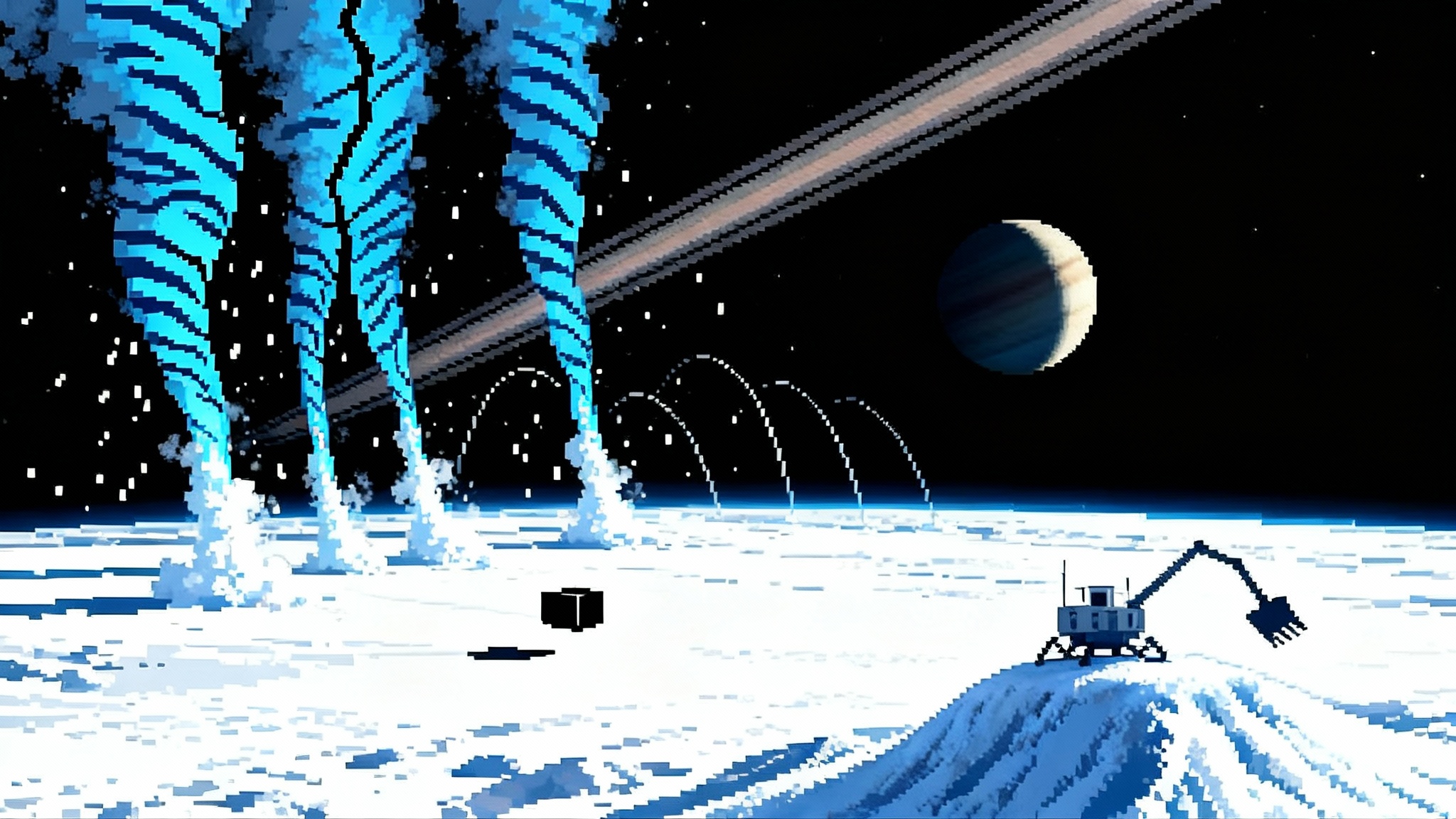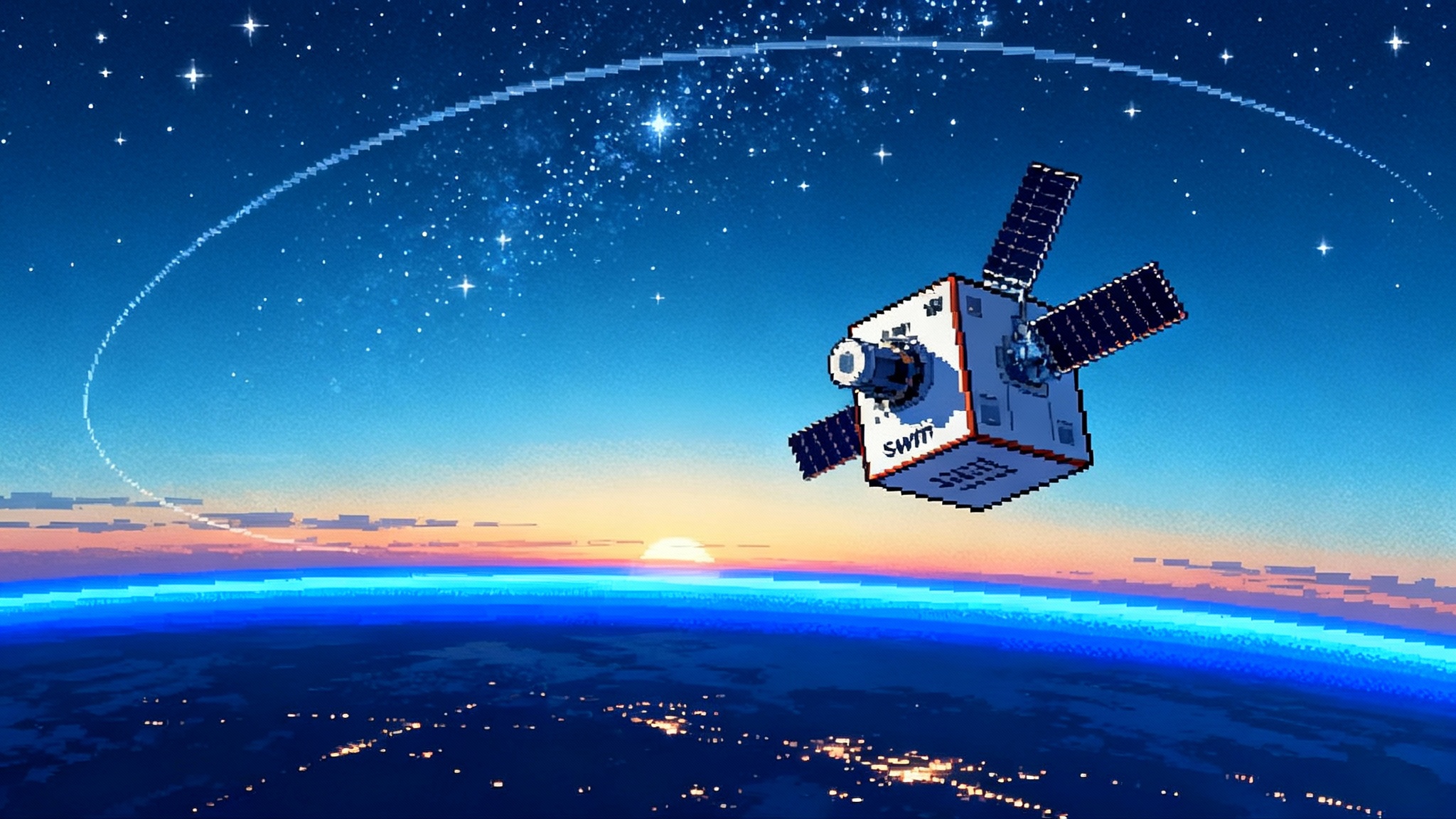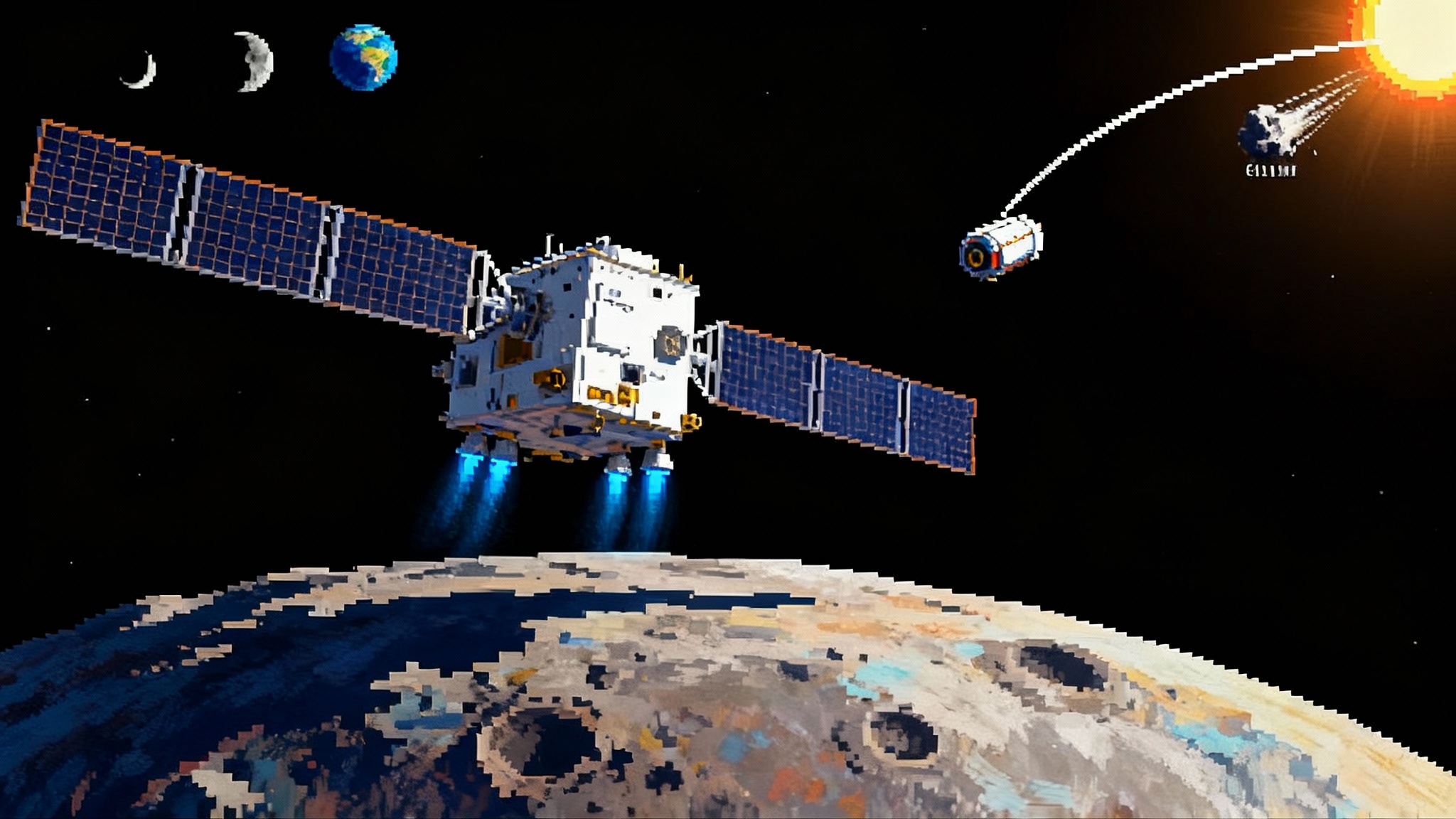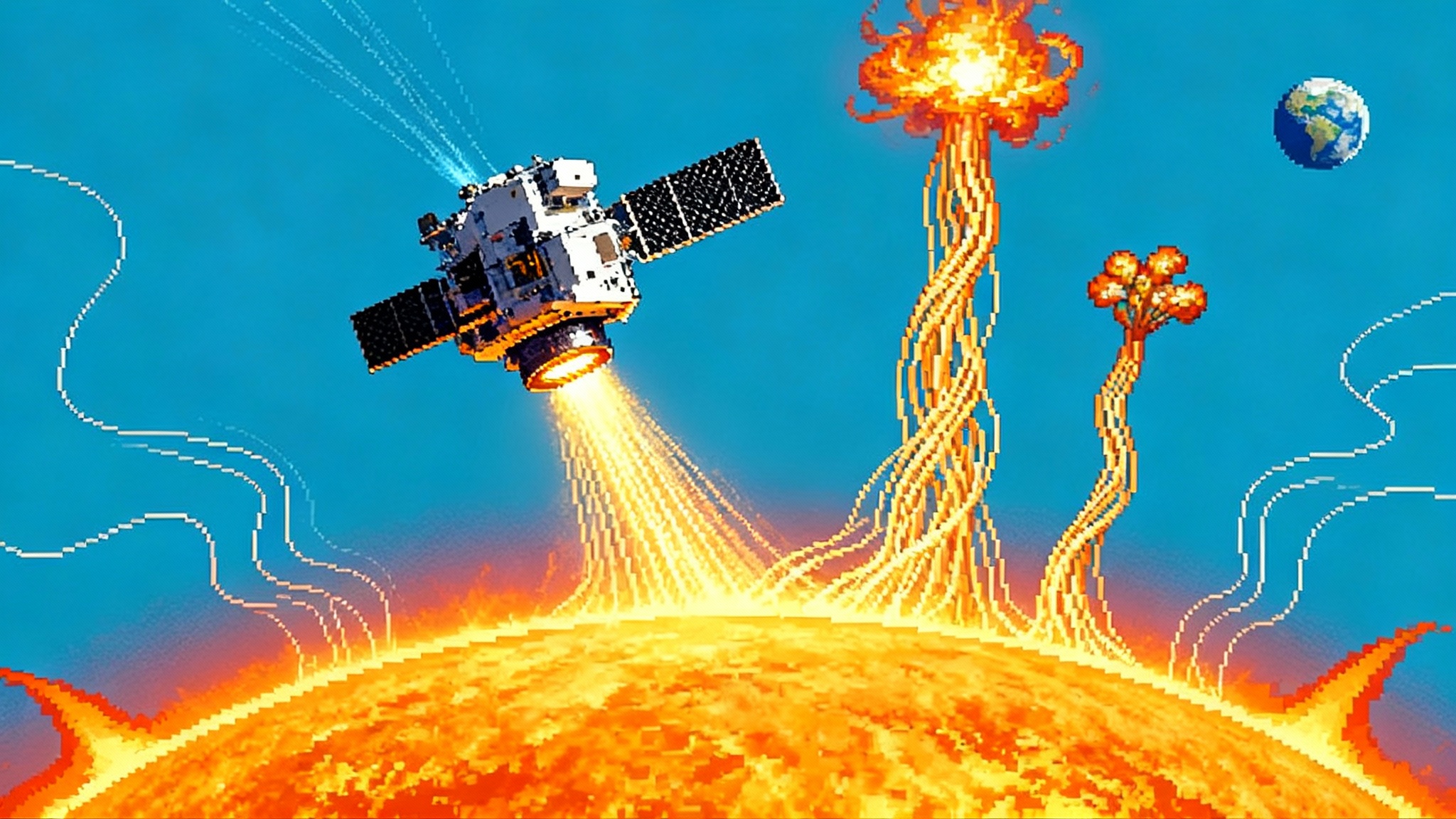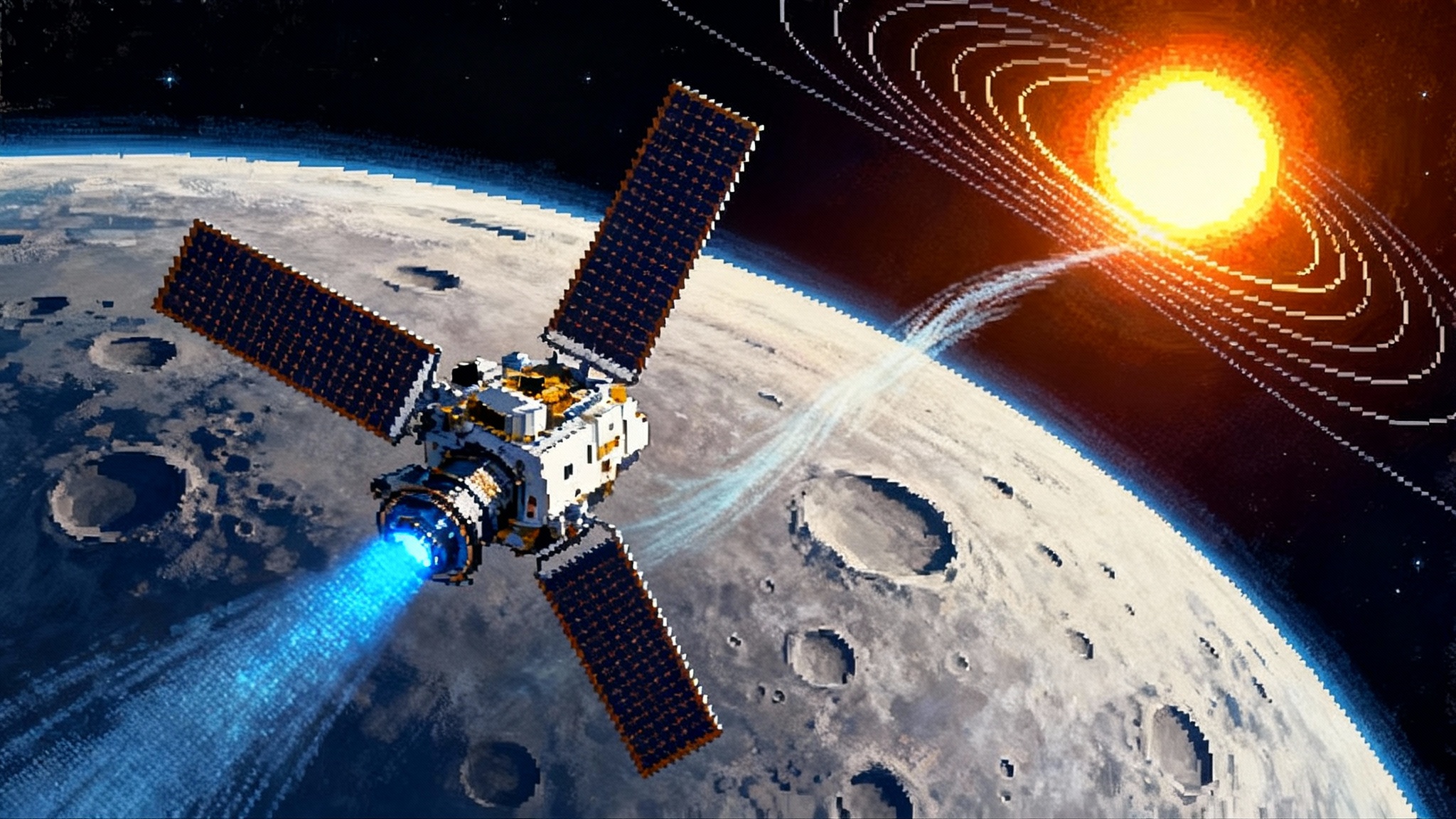A Starless Planet Caught in a Record Feeding Frenzy
A free-floating, Jupiter-mass world just set the fastest known accretion rate, blurring the line between planets and brown dwarfs and pointing to a fast path for finding many more starless worlds.
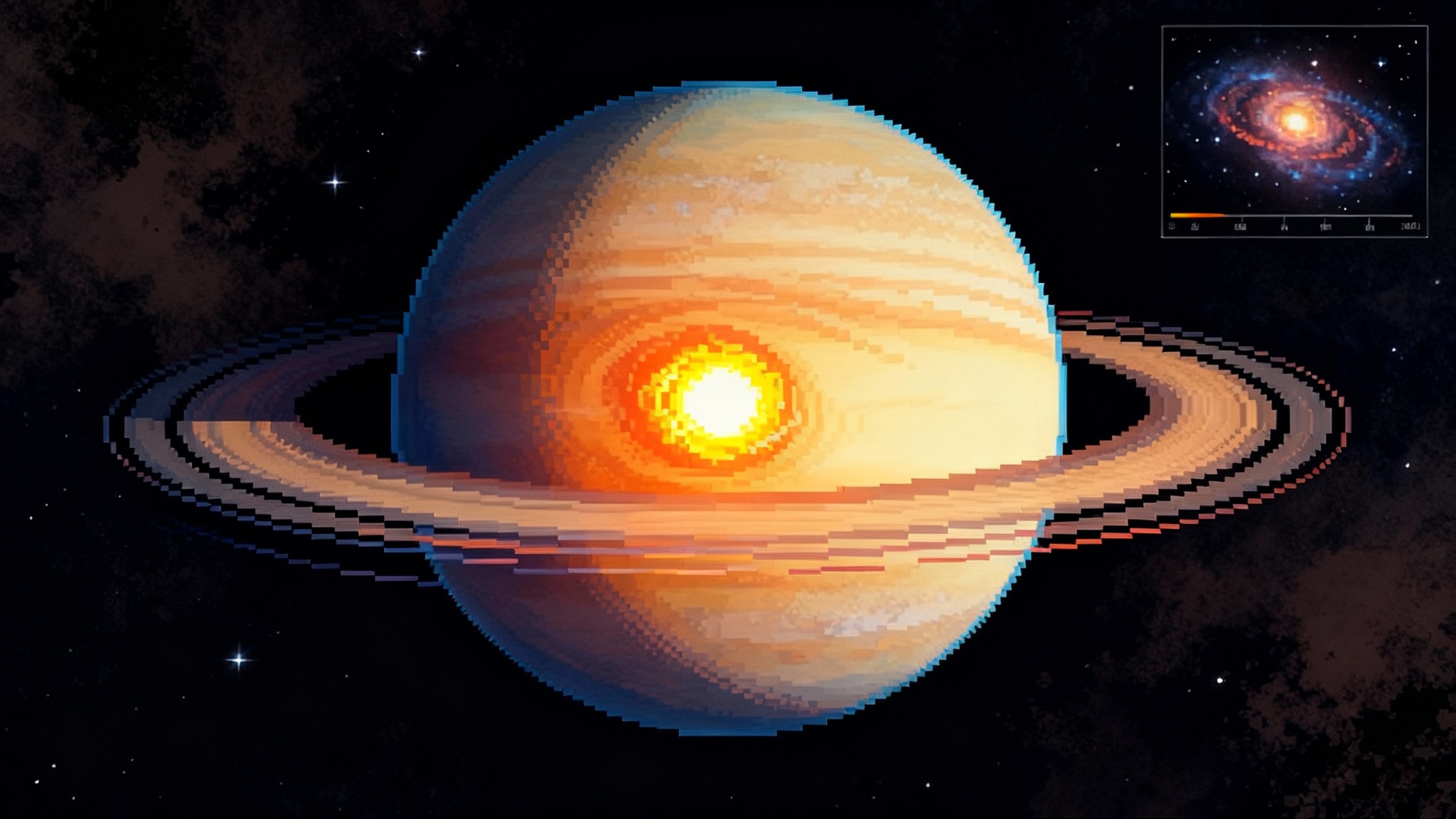
Breaking: a planet with no star is dining at record speed
In a cold, dark corner of the Chamaeleon constellation, about 620 light years from Earth, a baby world with no star to orbit has been caught in a growth spurt so intense it resets the record books for planets. The object, formally cataloged as Cha 1107-7626, is only five to ten times the mass of Jupiter. Yet for months in mid-2025 it pulled in gas and dust from a surrounding disk at roughly six billion metric tons per second. That is not a typo. It is the fastest accretion rate ever measured for a planetary-mass object, and it is the first time astronomers have watched a starless planet swing from quiet to hyperactive feeding in real time. The European Southern Observatory’s Very Large Telescope and follow up with the James Webb Space Telescope captured the outburst and its telltale spectral fingerprints in detail. The discovery was announced on October 2, 2025 by the European Southern Observatory, with technical results appearing the same day. ESO’s release on the record burst sets the scene.
The headline number is astonishing, but the physics is the real story. In April and May 2025, Cha 1107-7626 looked like a typical faint planetary-mass object. By June it had switched on, and by August its growth rate was eight times higher than a few months earlier. Astronomers saw a bright hot spot form where the infalling gas slams into the surface, along with water vapor and hydrocarbons glowing in the disk. In the optical, the hydrogen alpha line, often written as H-alpha, developed the same distinctive shapes seen in newborn stars that feed through magnetic funnels. That combination is a smoking gun for magnetospheric accretion, a star-like feeding mechanism, playing out on a world not massive enough to ever ignite as a star.
Why this is a seismic result
For decades, planetary scientists taught a clean partition. Planets formed in the disks around stars, mainly by the slow assembly of solids that later vacuum up gas. Brown dwarfs formed more like stars, from the collapse of a clump of gas and dust, but never got massive enough to fuse hydrogen. The border between the two was sketched with a simple mass threshold: around thirteen Jupiter masses to start fusing deuterium, and eighty Jupiter masses to sustain hydrogen fusion like a small star.
Cha 1107-7626 complicates that neat diagram. Here is a world well below the brown dwarf mass range, yet it wears the hallmarks of a star-style feeding engine. The hydrogen alpha signature, the sudden jump in accretion rate, the appearance of a hot spot, and the changing mid-infrared chemistry all point to a magnetic accretion funnel, not a leisurely, planet-style nibbling of gas. When a planetary-mass object behaves like a tiny protostar, the simplest inference is that some planetary-mass objects can form like stars. A similar rethink about volatile handling across the outer solar system appears in Makemake’s methane signals a new Kuiper Belt playbook.
The implications are specific and testable:
-
Formation channel: Some free-floating objects with planet-like masses may be born in isolated gas clumps that never become stars. Others may be ejected embryos from young solar systems. Those two stories predict different environments and motion patterns. A star-like origin should leave these objects clustered around star-forming regions with motions aligned to the local clouds. Ejection should scatter them more widely, with higher speeds and random directions.
-
Disk physics at miniature scale: Magnetospheric accretion has been studied for young stars, but here it runs on a body roughly the size of Jupiter. That changes the balance of gravity, magnetism, and radiation. It also offers a laboratory for how disks feed moons. The same physics that drives the hot spot on the planet likely controls how material settles into a circumplanetary disk where moons could grow. For the bigger picture on moon systems and why they matter, see Uranus just gained a moon. Time to launch the orbiter.
-
The outburst mechanism: The burst resembles the EXor-type events seen in young stars, short accretion flares thought to be triggered by instabilities in the disk or by the magnetic field gripping the inner rim. If those same instabilities operate in low-mass disks, we have a new window into how and when disks around planets can become unstable and dump material inward.
What the telescopes actually saw
The European Southern Observatory’s Very Large Telescope used the X-shooter spectrograph to monitor the object across ultraviolet, optical, and infrared light. The spectra show a jump in brightness by factors of three to six in the optical and a rise of about ten to twenty percent in the mid-infrared, consistent with a surface hot spot and a warmer inner disk. The hydrogen alpha profile split into two peaks with a red-shifted absorption dip, a textbook sign that gas is falling toward the object while some is blown outward. James Webb Space Telescope spectrometers, including Near Infrared Spectrograph and Mid-Infrared Instrument, then traced the disk chemistry during the high state. Water vapor features appeared around 6.5 to 7 microns, and hydrocarbon lines changed strength as the inner disk heated moderately. This volatile-rich picture echoes our look at Enceladus’ fresh organics demand a 2030s life-hunt mission. A 2016 spectrum hints that similar bursts may repeat, which would mean the object toggles between quiet and hyperactive phases across years. The technical report detailing these fingerprints is now on the preprint server. You can dive into the line shapes and time series in the Almendros-Abad 2025 arXiv preprint.
If you picture the system, think of a compact whirlpool of gas and dust around a small, hot ember. Magnetic field lines connect the inner edge of the disk to the object, like invisible rails. When conditions line up, packets of gas ride those rails and crash down, lighting a bright spot that rotates in and out of view. The process repeats until the inner disk is depleted, then quiets, then builds up again. The same choreography happens around newborn stars, but here it is scaled to a world with the gravity of a handful of Jupiters.
How this upends planet formation models
Textbook planet formation still stands for the bulk of planets bound to stars, but this event demands revisions in three places.
-
Boundaries by mass alone are not enough. If feeding physics, disk structure, and magnetic fields look like those of young stars, then the label planet versus brown dwarf cannot be set by mass alone. We need to classify by both mass and formation channel. That argues for a two-axis census: one axis for mass, one for how the object formed.
-
Disks can survive and even thrive without a parent star. Standard models assume a planet inherits both its raw materials and its energy budget from a nearby star. Cha 1107-7626 shows that a planetary-mass object can keep a disk and drive vigorous accretion while adrift. If disks can persist in the dark for millions of years, then moon formation around rogue worlds may be common. That, in turn, affects how much solid material these bodies carry and how they cool.
-
Time variability is not a footnote, it is central. Many models smooth away bursts as noise. But an eightfold jump in growth rate over a season redistributes angular momentum, changes chemistry, and reshapes the inner disk. If bursts recur, they may dominate how these worlds gain mass. Models that average over time will miss the real mass budget and misjudge the disk structure.
Where do such dark worlds come from
There are two leading routes to a starless planet.
-
Star-like birth: A patch of a molecular cloud collapses under gravity but never accumulates enough mass to ignite fusion. The clump still spins up and forms a disk. The magnetic field threads the inner rim, setting the stage for bursts like the one we just witnessed. Evidence for this route would include a concentration of such objects in star-forming regions, shared motion with nearby young stars, and disks that look like scaled down versions of stellar disks.
-
Ejection: A baby planet grows in a regular star system, then gravitational tussles fling it into interstellar space. The loser leaves with any disk material still bound. That disk might be smaller and shorter lived, and the object’s space motion could be higher and misaligned with local clouds.
Cha 1107-7626 looks more like the first route. It sits in a star-forming region, wears a substantial disk, and now shows a star-style feeding mechanism. One object does not settle the debate, but it tilts the scales.
From one-off to a new class: how to find many more fast
Today’s discovery feels singular because it is the first of its kind. In a few years, it should feel routine. The path from one object to a population is clear and practical.
-
Extremely Large Telescope era: The European Southern Observatory’s Extremely Large Telescope, scheduled to begin operations later this decade, will transform the field. Its instruments bring specific superpowers. HARMONI, a high-definition integral field spectrograph, will map velocity fields and hot spots across planetary disks at astronomical unit scales in nearby star-forming regions. METIS, a mid-infrared imager and spectrograph, will detect warm dust and water lines that trace the inner disk during bursts. MICADO, a sharp near-infrared imager, will nail down proper motions, vital for separating true members of a cloud from interlopers. With those tools, a program that revisits a few dozen young regions two or three times a year could capture dozens of bursts and build a timeline of how often and how intensely rogue planets feed.
-
Roman microlensing census: The Nancy Grace Roman Space Telescope is designed to run a deep microlensing survey toward the Galactic bulge. Microlensing is gravity acting as a natural magnifying glass. When a compact object drifts in front of a background star, the star’s light briefly brightens. Roman will see many such spikes. Some will be caused by starless planets. Microlensing measures mass and abundance, not disks, but it provides the headcount. Expect dozens to hundreds of free-floating planets in the first seasons, including bodies as light as Earth and as heavy as several Jupiters. That abundance anchors how common these worlds are and how many should carry disks.
-
Infrared and optical time-domain triggers: Bursts change brightness and color. That means time-domain surveys can find them. The Vera C. Rubin Observatory’s Legacy Survey of Space and Time will scan the sky repeatedly in the optical. Rogue planets are very faint in visible light, but a burst that boosts the optical by one to two magnitudes brings some over the detection threshold in nearby star-forming regions. In the infrared, wide-field imagers on ground-based telescopes and small-satellite missions can watch the same regions for the gentle mid-infrared rise that flags a warming inner disk. A practical strategy is to set up an alert pipeline: optical or infrared brightening triggers rapid spectroscopy on eight to ten meter telescopes, which then hands off confirmed bursts to James Webb Space Telescope and, later, the Extremely Large Telescope for high fidelity spectra.
-
Build a vetted catalog and reuse it: A single season of coordinated monitoring can create a catalog of candidate starless planets with disks. Each entry should list proper motion, colors, a burst history, and a priority score for deeper spectroscopy. That list becomes the feeder system for Extremely Large Telescope and James Webb Space Telescope time, which is scarce. Once the pipeline is built, the marginal cost of adding new candidates is low.
What to measure next, and why it matters
The goal is not to collect trophies. It is to answer precise questions that turn a headline into a theory.
-
How often do bursts happen, and how long do they last. If bursts like the 2025 event recur every few years and last months, they could contribute a large fraction of the final mass. That would reshape mass growth models for planetary-mass objects.
-
What is the geometry and strength of the magnetic field. Zeeman splitting in certain spectral lines and polarized light measurements can map fields. That tells us whether the magnetosphere is strong enough to regulate the inner disk, as in young stars.
-
Are there moons in the making. High contrast imaging and subtle kinks in disk emission lines can reveal gaps carved by growing satellites. These would be the first steps toward a moon census around starless planets.
-
What is the chemical recipe of the inner disk. Water vapor, carbon monoxide, hydrocarbons, and dust features change as the disk heats. That chemistry sets the initial conditions for any satellites and for the cooling history of the planet itself.
Each answer feeds a feedback loop. Better statistics drive better theory. Theory predicts what to look for next. Instruments sharpen their modes to catch it. The cycle repeats, and within a few years we go from anecdote to anatomy.
A concrete timeline to a census
-
Now through 2026: Time-domain scouts. Set up optical and infrared monitoring of Chamaeleon, Taurus, and Ophiuchus, with automated triggers for spectroscopy when any very red, compact source brightens by more than one magnitude in red filters.
-
2027 to 2029: Roman’s bulge seasons. Use microlensing yields to fix the space density of free-floating planets. Cross-match Roman candidates against the time-domain alerts to prioritize nearby systems for follow up.
-
2028 onward: Extremely Large Telescope first light and ramp up. Start an annual cadence program on a dozen young regions. Combine HARMONI velocity maps, METIS mid-infrared chemistry, and MICADO astrometry to build a uniform sample. Aim to capture at least ten bursts per year and follow each through rise and decline.
-
By 2030: Publish a volume-limited catalog of starless planets with disks within a thousand light years, with measured burst duty cycles and a first pass at the formation mix. If the mix leans star-like, we adjust our diagrams and textbooks accordingly.
What this means for how we define a planet
Labels are tools, not laws of nature. The discovery of Cha 1107-7626 in full feeding mode reminds us to define planets by how they form and behave, not only by their mass. A world that weighs a few Jupiters, lives without a star, carries a disk, and feeds through magnetospheric funnels is not a scaled down star, but its growth is star-like. That nuance matters. It shapes how we count worlds, where we look for them, and what physics we teach.
The takeaway
A single rogue planet has just turned the spotlight on a hidden population. With a record accretion burst, it blurs the old border between planets and brown dwarfs and forces planet formation theory to make room for star-style growth at miniature scale. The next steps are concrete: build a trigger pipeline, let Roman count the drifters, and give the Extremely Large Telescope the spectral detail to read their diaries. Do that, and today’s headline will become a catalog, then a class, and finally a chapter in how worlds, even without suns, are made.
For more technical detail, see ESO’s release on the record burst and the Almendros-Abad 2025 arXiv preprint.
